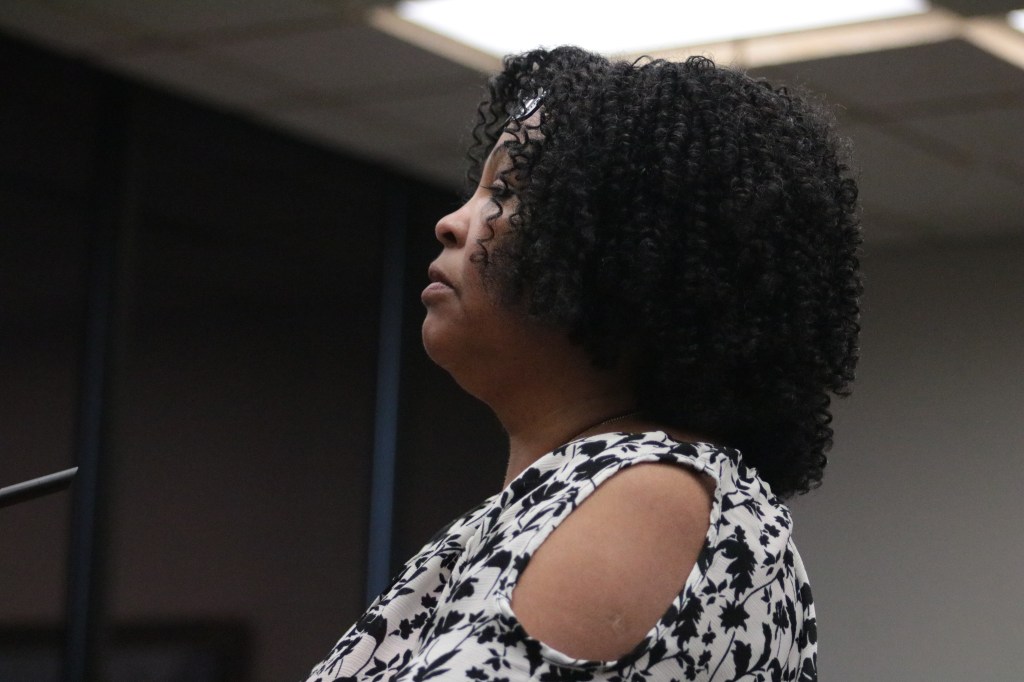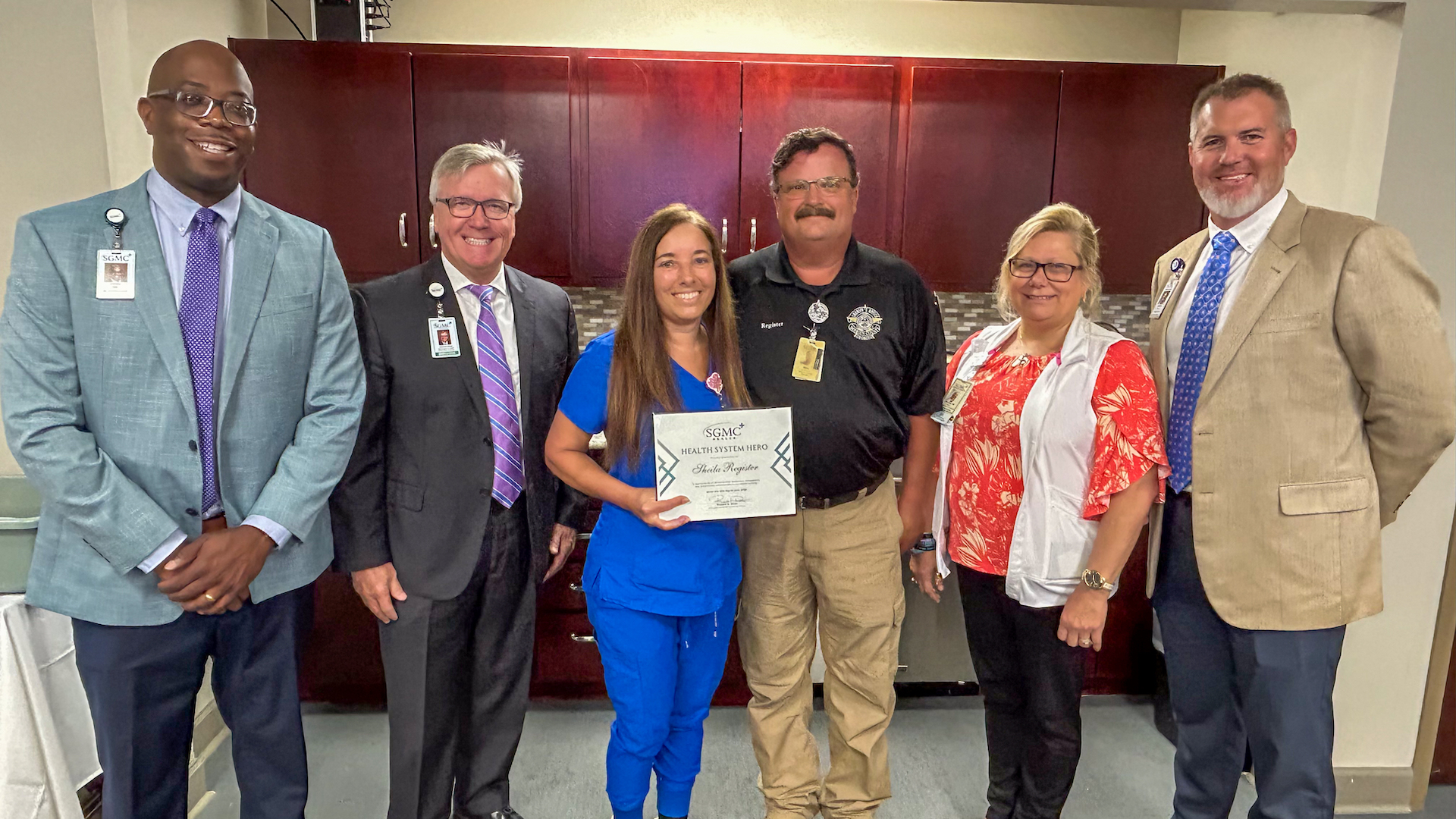Live Oak council to revisit operating hour ordinance
Published 1:00 pm Saturday, June 22, 2019

- Cassandra Williams with the Big B (Ms. D’s Kozy Corner) asked the board to reconsider its ordinance on hours of operations for restaurants passed last year.
LIVE OAK — An ordinance passed last year restricting the business hours of restaurants near residential neighborhoods will be reexamined by the Live Oak City Council.
The council gave city staff the go-ahead to possibly extend the hours of operations for those businesses — or business — at its June 11 meeting.
The ordinance passed in November 2018 makes small-scale restaurants/establishments that can serve only beer or beer and wine within 100 feet of single residential zoning close at midnight and stop serving at 11:30 p.m.
There are only two restaurants that were affected by the ordinance — the Big B (or Ms. D’s Kozy Corner) and All Decked Out Cafe. George Curtis, the city’s planning and zoning director, said the Big B is the only establishment that has expressed a desire to change that ordinance.
Councilman Don Allen said the Big B believes
Marion Gross, who owns the Big B, as well as other family members and Kerri-Kae Hart, who is running the restaurant at the establishment, asked the council and City Manager Ron Williams for some relief from those restrictions.
Cassandra Williams, one of the family members that helps with the business, said they just want a better understanding of what the new rules and regulations are trying to accomplish.
“We don’t want to go against what we’re trying to grow into,” Williams said, adding she believes the city should take into consideration the longevity of the business and its involvement with the community. “But we don’t want to be just shut out in the process.”
Ron Williams, though, said he believes the city has been clear in what the current operating regulations are, even providing copies of the regulations.
He added he wanted the board’s direction before offering any proposed changes.
Council President Bennie Thomas, whose district includes the establishment, said he doesn’t have a problem extending the hours of operation for serving food to 1 a.m.
“I don’t see anything wrong with it,” Thomas said, adding he has talked to the people in the neighborhood and there’s only one person opposed to it but he hasn’t heard any complaints. “I don’t think you let one household in the district control the business.
“Sometimes I wake up at 1 o’clock in the morning, hungry.”
Councilman Don Allen said some of the complaints stem from music from cars in the parking lot or other parties at houses across the street. He said that isn’t necessarily the Big B’s fault.
“I’d like to see us revisit it,” Allen said.
Thomas agreed, saying the Live Oak Police Department and Chief Buddy Williams, who has already been working with the business, would help handle those issues.
“There’s room for discussion,” Buddy Williams said. “I do believe that if you have a business in this city, it should be successful. But I also think that you have to comply with the laws put forth to make our community better and safer for everybody involved.”
Chief Williams asked the council to provide him additional time to see if he and Gross could work out an arrangement that worked for all involved.
The council still directed Ron Williams and staff to bring back a revised ordinance, with Chief Williams noting any change would take several months to complete.
Sewer repair loan payment
After some discussion by the council, including using the money for additional sewer work, the council approved by a 3-2 vote to transfer $140,000 as debt payment for a previous sewer repair.
According to Ron Williams and Joanne Luther, the city’s finance director, the work began in 2009 and the city has transferred the money collected on residents’ utility bills as a sewer assessment fee to repay the loan since 2012. The project cost $15 million and by utilizing grants, the city’s portion — the loan amount — was $3 million.
Luther said the city council promised at that time to use these funds in order to make the loan payments. She said the agreement the city signed also said if those funds weren’t used, rates would be increased in order to make the loan payments.
“We have to pay this debt,” Ron Williams said. “It’s just a matter of how do you want to pay it.
“If you don’t want to pay it this way, we’ll have to pay it though rate increases.”
Luther said the actual loan payment is $218,000, so the money collected is used to offset the majority of that payment.
“That was the intent,” she said.
Councilman Mark Stewart and Councilwoman Robintina Reed voted against transferring the money for the payment. Stewart said when he initiated the “Sewer Rehab Utility Reserve” fund, which is where the money is being transferred from, it was to set aside reserves for future repairs, not to be used as a loan payment.
SVEC gives back
Jon Little, the communications director at Suwannee Valley Electric Cooperative, presented a check to Luther as a refund based on profits earned by SVEC.
While SVEC mainly serves the county, Little said there are about 400 consumers within the city, including some of the city’s facilities, leading to the refund check of $1,775 for the city. Total, Little said SVEC is returning $900,000 to its members this year.
Little also updated the board on SVEC’s Operation Round Up program in which customers can opt to round up their bills to the next dollar with the proceeds are then used as grants for teachers. Teachers in local schools may apply for a grant of up to $500 to be used for equipment and supplies that benefit students in the classrooms.
“It’s been a really neat thing to see,” Little said.





